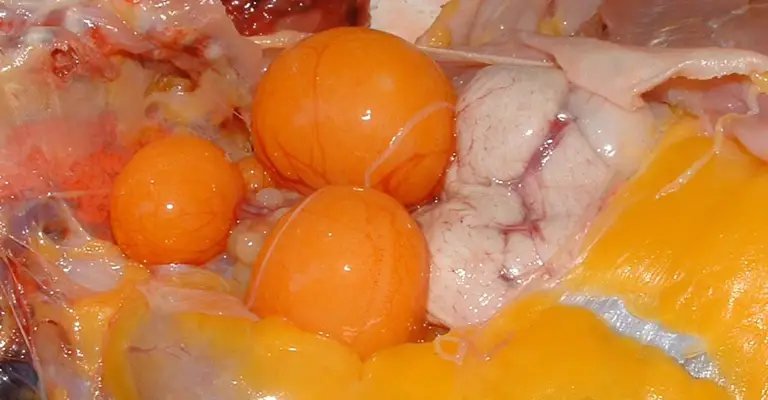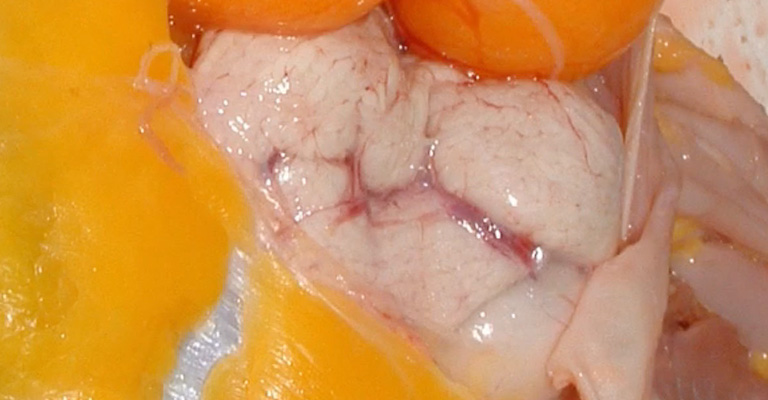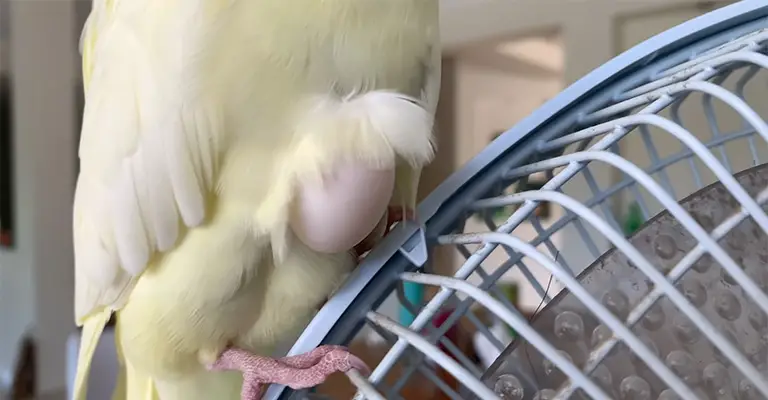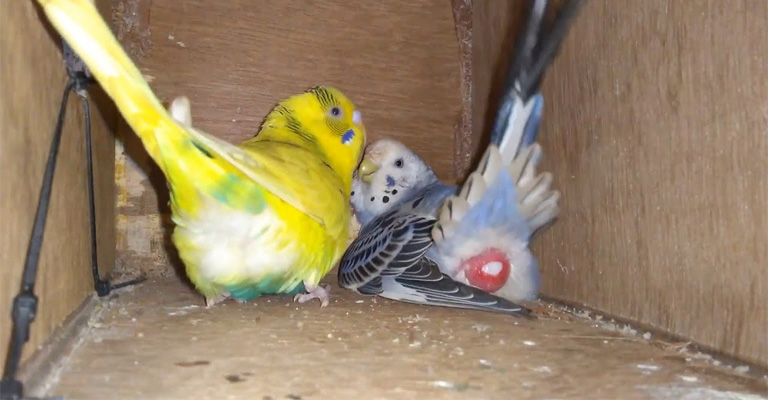The avian world, with its diverse species and unique adaptations, never ceases to amaze curious minds. Among the numerous intricacies of avian biology, the structure and function of bird ovaries stand out as captivating subjects of study.
Unlike mammals, birds possess a distinct reproductive system that involves an intriguing arrangement of ovaries.
Understanding how many ovaries do birds have and how do they work offers a glimpse into the remarkable ways in which nature has shaped these feathered creatures for reproduction and survival.
Exploring the anatomy and mechanisms behind avian ovaries provides insights into the wonders of evolution and the specialized adaptations that have enabled birds to thrive in various habitats.

How Many Ovaries Do Birds Have And How Do They Work?
Most birds have only one functional ovary, which is usually the left one. The right ovary is either absent or very small and non-functional. This is different from mammals, which have two ovaries that produce eggs in pairs.
The single ovary of birds produces eggs one at a time rather than in pairs. The eggs are released from the ovary into the oviduct, where they are surrounded by albumen (egg white), shell membranes, and shell.
The whole process takes about 25 to 26 hours for a chicken hen and varies by species. The bird lays the egg and then starts the process again with another egg from the same ovary.
Bird ovaries are fascinating organs that are responsible for producing eggs and hormones.
They are different from mammalian ovaries in many ways, such as having only one functional ovary, ovulating one or two eggs per day, and being sensitive to light exposure.
Here are some scientific ways that bird ovaries work:
Develop From The Left Side Of The Embryo
In most bird species, only the left ovary and oviduct are functional, while the right ones are either absent or very small and non-functional.
This asymmetry is established during embryonic development when the left gonad receives more blood supply and growth factors than the right one.
Contain Thousands Of Oocytes At Hatch

Unlike mammals, who produce new oocytes throughout their reproductive life, birds are born with a fixed number of oocytes that are arrested in the first meiotic prophase.
The chicken ovary contains about 480,000 oocytes at hatch, but only a few hundred of them will mature and ovulate.
Form Follicles Of Different Sizes And Colours
The oocytes in the bird ovary are surrounded by a layer of granulosa cells and a thin membrane called the vitelline membrane.
These structures form the follicles, which can be divided into two groups: white cortical follicles and yellow follicles. The white cortical follicles are small (1-5 mm) and contain immature oocytes that have not accumulated yolk yet.
The yellow follicles are larger (5-40 mm) and contain mature oocytes that have accumulated yolk and have a yellow colour due to carotenoids.
Select And Recruit Follicles Into A Hierarchical Order
The bird ovary has a limited capacity to accommodate large yellow follicles, so it has to select and recruit them from the pool of white cortical follicles in a sequential manner.
The selection process is influenced by hormonal and nutritional factors, as well as genetic and environmental factors.
The recruitment process involves the growth and differentiation of the selected follicles into small yellow follicles (5-8 mm) and then into large preovulatory follicles (9-40 mm).
The preovulatory follicles are arranged in a hierarchical order, with the largest one (F1) being the next to ovulate, followed by F2, F3, F4, F5, and F6.
Ovulate One Or Two Eggs Per Day

The ovulation process is triggered by a surge of luteinizing hormone (LH) from the pituitary gland, which occurs about 30 minutes after the previous egg is laid.
The LH surge causes the rupture of the F1 follicle and the release of the oocyte into the oviduct. The oocyte is then surrounded by albumen (egg white), shell membranes, and shell in the oviduct to form a complete egg.
The whole process takes about 25 to 26 hours for a chicken hen. After ovulation, the F2 follicle becomes the new F1, and a new follicle is recruited from the small yellow group to join the hierarchy.
Undergo Atresia When Follicles Fail To Ovulate
Not all follicles that enter the hierarchy will ovulate successfully. Some of them may fail to respond to the LH surge or may be damaged by external factors such as stress or disease.
These follicles undergo atresia, which is a process of degeneration and resorption of the oocyte and granulosa cells.
Atresia can occur at any stage of follicular development, but it is more common in small yellow follicles than in large preovulatory ones.
Produce Steroid Hormones:
The granulosa cells and theca cells of the follicles produce steroid hormones such as estrogen, progesterone, testosterone, and corticosterone.
These hormones have various roles in regulating reproduction, such as stimulating follicular growth and maturation, inducing behavioural changes such as mating and nesting, preparing the oviduct for egg formation, maintaining egg production and quality, and modulating stress responses.
Respond To Light Exposure And Photoperiod:

The bird ovary is sensitive to light exposure, especially the number of hours of light in a day (photoperiod).
Light stimulates the hypothalamus and pituitary gland in the brain to produce hormones that control ovary function.
These hormones include gonadotropin-releasing hormone (GnRH), which stimulates LH and follicle-stimulating hormone (FSH) secretion; LH, which triggers ovulation; and FSH, which stimulates follicular growth.
In chicken hens, ovulation usually occurs under normal daylight conditions and almost never after 3:00 p.m.
Therefore, when a hen lays an egg too late in the day, the next ovulation occurs the following day, and the hen has a day when it does not lay an egg.
Adapt To Different Environmental And Physiological Conditions:
The bird’s ovary can adjust its reproductive output according to various factors, such as season, temperature, food availability, social cues, stress, disease, and age.
These factors can affect the number and size of follicles, the rate and frequency of ovulation, the quality and quantity of eggs, and the duration and intensity of the laying cycle.
For example, some birds have seasonal breeding patterns that are synchronized with the availability of food and nesting sites. Some birds can also delay or stop ovulation when they are exposed to stress or disease to conserve energy and resources.
These are some of the ways that bird ovaries work. They are remarkable organs that enable birds to produce eggs and offspring in a variety of conditions.
Why Do Birds Only Have 1 Ovary?

Birds have only one ovary because of their evolutionary adaptations to flight and reproduction.
Having one ovary reduces their body weight and improves their aerodynamics, allowing them to fly faster and longer.
It also increases their metabolic efficiency and reproductive success, as they can allocate more energy and resources to egg production and laying.
Here are some reasons why birds have only one ovary:
Flight Ability
Birds need to be lightweight and balanced to fly effectively. Having two ovaries would increase their body mass and affect their centre of gravity, making them less agile and stable in the air.
A single ovary reduces the weight and space occupied by the reproductive system, giving birds an advantage in flight.
Energy Saving
Birds have a high metabolic rate and need to consume a lot of food to maintain their body temperature and activity level.
Having two ovaries would require more blood supply and oxygen delivery, as well as more maintenance and repair.
A single ovary reduces the energy expenditure and oxygen consumption of the reproductive system, allowing birds to save energy for other vital functions.
Resource Allocation
Birds need to produce a lot of eggs during the breeding season, which requires a lot of nutrients and minerals. Having two ovaries would increase the demand for these resources, as well as the risk of depletion or deficiency.
A single ovary reduces the resource requirement and competition of the reproductive system, allowing birds to allocate more resources to egg formation and quality.
Reproductive Output
Birds need to lay eggs frequently and efficiently during the breeding season, which requires a fast and synchronized ovulation cycle.
Having two ovaries would increase the complexity and variability of the ovulation process, as well as the possibility of errors or failures.
A single ovary simplifies and streamlines the ovulation process, allowing birds to lay eggs more regularly and reliably.
Reproductive Adaptation
Birds need to adjust their reproductive output according to different environmental and physiological conditions, such as season, temperature, food availability, social cues, stress, disease, and age.
Having two ovaries would limit the flexibility and responsiveness of the reproductive system, as well as the potential for variation or innovation.
A single ovary enhances the adaptability and diversity of the reproductive system, allowing birds to optimize their reproduction in various situations.
These are some of the reasons why birds have only one ovary.
FAQ
Birds have two ovaries, but only the left one is functional. The right ovary regresses early in development.
Bird ovaries are distinct in structure. While mammals usually have two ovaries with multiple follicles, birds have one functional ovary that produces eggs sequentially.
The avian ovary contains clusters of ova, or potential eggs, in various stages of development. Hormonal cues stimulate the growth of follicles, with one dominant follicle releasing an egg during ovulation.
Hormonal changes, primarily involving luteinizing hormone (LH), trigger ovulation in birds. As the dominant follicle matures, LH surges, causing the follicle to rupture and release the egg into the oviduct.
The bird’s ovary is central to egg production and reproduction. It houses developing ova and releases mature eggs for fertilization.
The sequential nature of egg production ensures a steady supply of eggs for potential offspring while conserving energy.
Conclusion
The investigation into the number and functionality of bird ovaries reveals the marvels of adaptation within the avian realm.
With a unique reproductive system that diverges from that of mammals, birds have evolved to suit their ecological niches and reproductive strategies.
The presence of multiple ovaries in birds, paired with their cyclic release of eggs, showcases the intricate balance of nature’s design.
The diversity in ovarian structure and function among bird species highlights the evolutionary flexibility that has allowed avian populations to flourish across the globe.
As we uncover more about avian reproductive biology, we deepen our appreciation for the complexities of life and the remarkable ways in which organisms have adapted to ensure the continuity of their species.